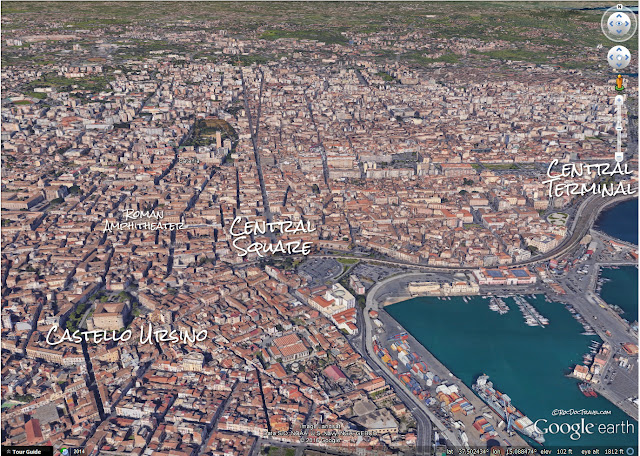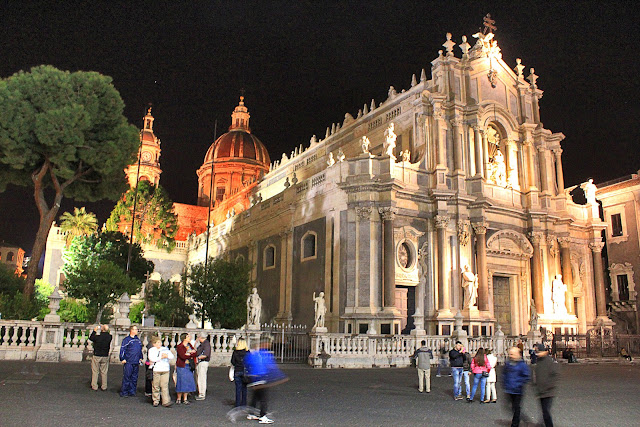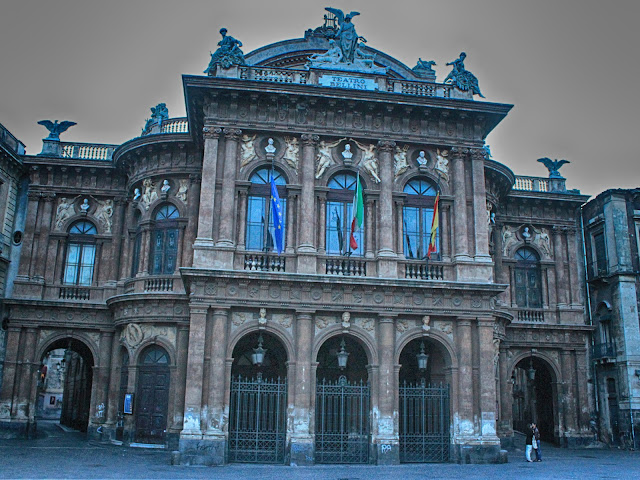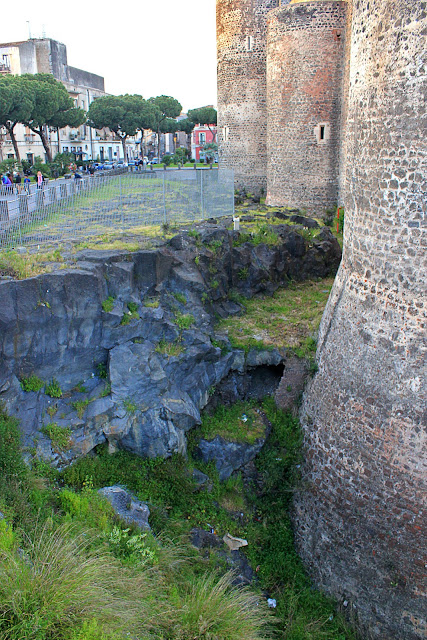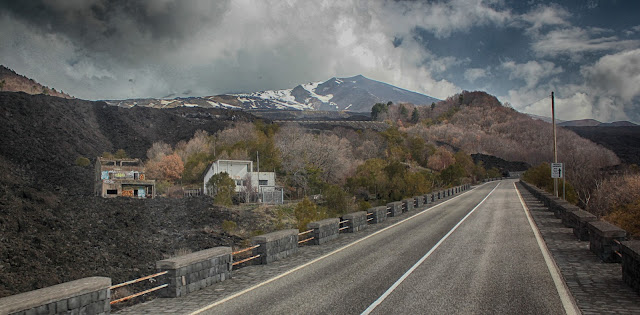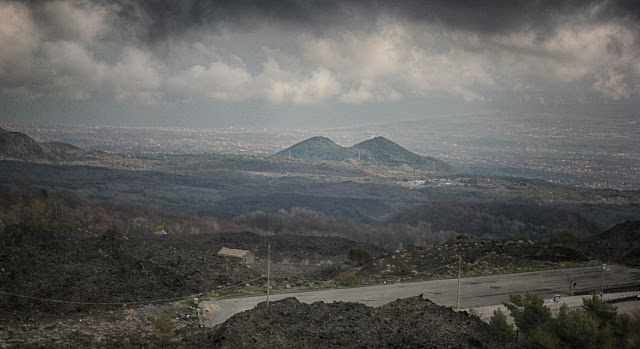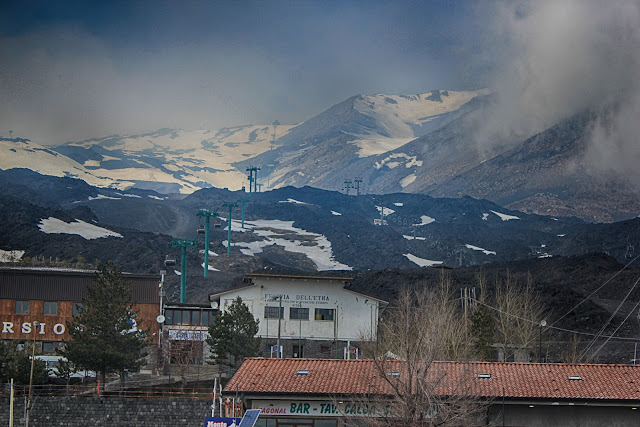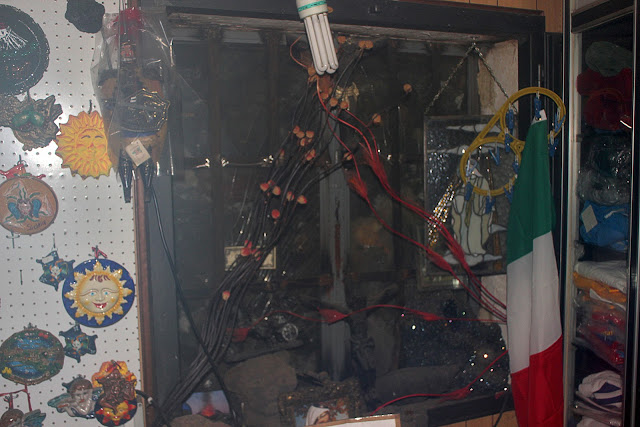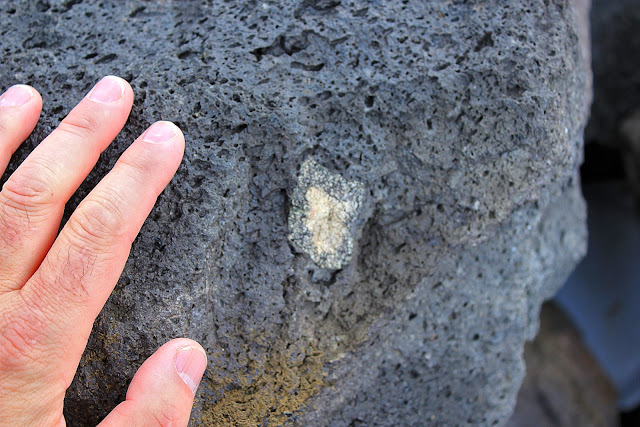Mt. Etna, Sicily
Mt. Etna Volcano, Sicily, Italy
Visit Europe's highest and most active volcano, Etna on the island of Sicily. And see how the people of Catania have lived with their lava-spewing neighbor for more than two millennia!Why Visit Etna?
Etna has the longest written history of people interacting with a volcano on Earth. That history goes all the way back to the Phoenicians, who had settlements in Sicily in 1300 B.C. The list of who ruled Sicily after that looks like the Table of Contents of a book on Mediterranean and European Powers - the Greeks, Carthaginians, Romans, Vandals, Goths, Ostrogoths, Byzantines, Lombards, alliances of various Muslims and Persians, Normans and Vikings, German Hohenstaufens, various local Kings, the Spanish, the Bourbons, and finally the unified Italy. That uniquely rich and varied history resulted in a rich and unique Sicily, whether you're talking about peoples, language, culture, architecture, art, or food. There's nowhere else on Earth like Sicily.
Throw a phenomenally active and Big volcano into the mix, and you've got one of the most fascinating places our planet has to offer. And here's a geologic tidbit: Etna is on the African tectonic plate, while the rest of Italy is on the Eurasian plate.
Etna's erupting SE crater from the air. Note the dirty air to the right, downwind from the eruption.
Travel to Sicily
Flights: You can fly to Catania or Palermo from most major airports in Europe. I recommend flying to Catania if Etna is your main objective, because it's quite close.
Lodging: There are plenty of good hotel options in Catania. We stayed at the Hotel Villa Romeo because of its location near the central bus / train terminal (which in Europe always makes travel simpler), and enjoyed its charm, service, staff, and location a lot. Do your homework and follow travel site recommendations.
Ground Transportation: Like most travel sites, I don't recommend trying to drive in the demolition derby called Italy, except out in the country. City driving is chaotic at best, and roads are extremely narrow. Just look at all the dented cars and broken mirrors if you don't believe me. There is good, frequent bus service to Rifugio Sapienza (the resort area) up on Etna from the main Catania terminal (as well as to other parts of the island). You can take bus or train to and from the Catania airport.
Water: We drank bottled water but were not overly strict about it. We also ate at a variety of public places and didn't have any problems with sickness.
Food: Get out and eat Sicilian food! Holy Moly, it's good! When you try fish and shellfish that were caught that morning, it may completely revise your view of seafood. You won't find the international chains in Catania, but American pizza places could sure use some lessons from Catanian cooks.
Currency: Euros.
Language: We had a couple of Italian speakers with us, and when the Sicilians were bantering in their native tongue, their conversation was almost impossible for them to follow! When you're in areas frequented by tourists, even in Catania, you'll get by with basic Italian. But this isn't Rome - good English speakers are not common except at the busier hotels.
Considerations: Mix and mingle with the locals wherever you eat and hang out. They're fun, enthusiastic, and full of stories and advice! To blend in, learn how to talk with your hands in Big Gestures. Many neighborhoods look sketchy, and you should be careful where you go and when, but most places aren't quite as risky as they look to American eyes.
Catania: Living With A Volcano
Since its founding in the 8th century B.C., Catania has been wholly or partly destroyed by earthquakes and volcanic eruptions many times. Its more famous neighbor Syracuse is far enough away to have escaped the eruptions and the worst of the earthquakes. The Roman city was destroyed by lava flows through much of the city and heavy ash fall in 121 B.C. Etna erupted massively in 1669, destroying most of Catania with lava flows that you can still see today. Then in 1693, the city was nearly completely destroyed by a big earthquake. In reconstruction, an ornate Boroque style was intentionally implemented to give the city its ornate current appearance. Catania's architecture has a unique appearance partly because of extensive use of the local lava flow rocks (basalt).Catania is directly south of Etna.
Pictures below are from the cental square with its cathedrals, and Castello Ursino. We stayed in a hotel just west of the central terminal.
The city was rebuilt after the earthquake of 1693 in this ornate Boroque style, using the native basalt (dark lava) from Etna as building stones. The Cattedrale de Sant'Agate was completed in 1711 using surviving parts of an earlier Norman structure built in 1093 on the site of Roman baths.
The Chiese della Badia (the Abbey, left) was built on the ruins of the previous abbey destroyed in the 1693 earthquake. It is notable for its huge, 8-sided dome.
The Teatro Massimo Bellini pays homage to Catania's favorite son, hugely influential composer Vincenzo Bellini (1801-1835). The current building was completed after many delays in 1890. An earlier theater from the 1820's in Bellini's honor was destroyed by bombing in World War II.When Arabs ruled Sicily in the first millennium, Catania was known as the "city of the elephant." This sculpture is a sort of talisman dating from the Byzantine period, and was thought to ward off disasters. Because of its location, Catania certainly could use protection!
A close-up of the 1000 year-old Catania Elephant.
Castello Ursino dates from the 1200's and was the seat of the Sicilian parliament in the time of the Vespers. It was the seat of power until nearly 1400, when the capital moved away from Catania.
The 1669 lava flow surrounded the castle, effectively raising ground level by about 15 feet (about 5 meters). The castle was originally on a cliff overlooking the sea to protect the harbor, but the lava flow filled in the old harbor and moved the coastline more the a kilometer away. Today the castle houses a museum of art and history.
The moat was filled in by the 1669 lava flow, and the eastern half seen here was later excavated.
Catania was rebuilt on top of the 1669 lava flow. When I talked to the local people about how they felt living in the danger zone from Mt. Etna, they uniformly replied that they loved living here and would never think of living anywhere else. That easy-going attitude is hard for my mostly American students to understand in our Natural Disasters class, but none of them have 30 generations of ancestors who lived in the same hometown, either.
A quarry for basalt in the 1669 lava flow. I suppose even disastrous events can have useful applications.
This house wasn't so lucky. The property ended up being so rough and uneven, it wasn't worth rebuilding on.
Geology of Etna
At 3,329 m (10,922 ft), Etna is the highest volcano in Europe. It is also the most active, erupting nearly every year. Etna is about the same total age as Mt. Rainier in Washington, USA, about 500,000 years old. Both are located where two tectonic plates are colliding. In this case Africa is slowly sliding under Europe along a very complex boundary that passes approximately under Etna. Past eruptions from Etna have put ash as far away as Rome, 800 km (500 miles) to the north. Several thousand years ago, the volcano suffered a catastrophic collapse of its eastern slope, like a giant version of St. Helens' 1980 eruption, which likely produced a tsunami that raced throughout the Mediterranean. The collapse formed the concave "Valle del Bove" (Valley of the Ox), which has been the site of many further collapses and lava flows.Since 1600, Etna has had more than 60 significant eruptions from the summit and the flanks. Just since 2000, Etna has erupted frequently, most notably in 2001 and 2003-2004. It was erupting during our visit in 2013, and activity continues today.
The southern ski area and resort on Etna is generally called Rifugio Sapienza ("Wisdom's Refuge"). Buses serve it from Catania only a couple of times a day - check the schedules. The hotel and amenities on the mountain are mediocre, so only stay there if you really, really want to be close to the mountain's top.
You can take a vehicle tour up toward the crater (depending on current restrictions due to eruption activity), or do as we did and take the tram / Funivia del Etna. It's more expensive than you would like (about 30 Euros), but worth it to save time and save your legs from hiking.
This map shows the locations and ages of eruptions from Etna. Eruptions from the flanks are common. The devastating eruptions of 1669 originated from the cinder cones next to Nicolosi at the south end of this map. From parks.it
See more maps of historical lava flows at VolcanoDiscovery.com
Google Earth view of Etna with some of its more recent eruptions labeled. It is the southernmost of the Italian volcanoes that include Vulcano, Stromboli, and Vesuvius in the distance. Eruptions in 2018-2019 were in Valle del Bove.
These are the 1669 cinder cones that erupted to destroy Catania, along the road to Etna and adjacent to the pleasant little town of Nicasio.
The double hills are the 1669 cinder cones that destroyed Catania, viewed from the resort area on Etna.
The ski area and resort on Etna's south side are a complex of typical tourist traps. The Funivia dell' Etna is what you come up here for - a lift high onto the volcano. Rifugio Sapienza is a hotel and restaurant, but it's also the name on the bus route up here from Catania.
There's a good chance you'll encounter a cloudy day on Etna as we did. This is a look up the 2003 and 2001 lava flows.
This little souvenir shop was partially buried in 2001. It has been open for business ever since, with a revived interest.
This window on the souvenir shop looks out on basalt! The glass was cracked by the heat. I'd like to make some interior design suggestions here.
The upper cinder cone of Monti Silvestri.
These layers record the cinder cone's eruption sequence. The more solid layers are spatter, liquid lava that splashed or squirted out of the vent and welded themselves together on the ground. Looser, rocky-looking layers are tephra, material tossed out in the eruption that was more-or-less solid when it landed on the ground.
Here is a good layer of spatter.
These photos are from posters in the visitor center at the top of the tram. The 2001 and 2002-2003 eruptions made the news because the Sicilians fought the volcano to save their resort buildings. Using big bulldozers, they built massive levees to direct the lava away from the structures. It worked! They were able to minimize damage, but with a volcano as big and hot as Etna, there's only so much you can do.
The Valley del Bove is the big, concave ancient landslide area on Etna's east flank. It has been the site of many big lava flows in recent years.
One of Etna's victims.
This one really got the attention of our group of Geologists! It's a xenolith, a rock that fell into the magma somewhere deep under the mountain, and was erupted as a basalt-covered bomb. Etna was built on older sedimentary rock layers that occasionally show up as xenoliths. Imagine - this is a sedimentary rock erupted by a volcano!
It was so cloudy on our visit, we had no opportunity for pictures at the top of the tram that are worth looking at. But we could smell the hydrogen sulfide wafting from the current eruption, and heard some rumblings. Don't cancel your trip because of clouds - at least you can say you were there, and you know what it smells, sounds, and feels like on Europe's highest and most active volcano!
Related Websites:
About Catania from italia.it
Catania's tourism website in English
Current report from the Smithsonian's Global Volcanism Program
About Catania from italia.it
Catania's tourism website in English
Current report from the Smithsonian's Global Volcanism Program
M.S. - More Science
Easy-to-read information from Volcano Discovery
Good geologic summary from Sistema Rischio Vulcanica
A good but technical summary from VUMA
Good geologic summary from Sistema Rischio Vulcanica
A good but technical summary from VUMA




